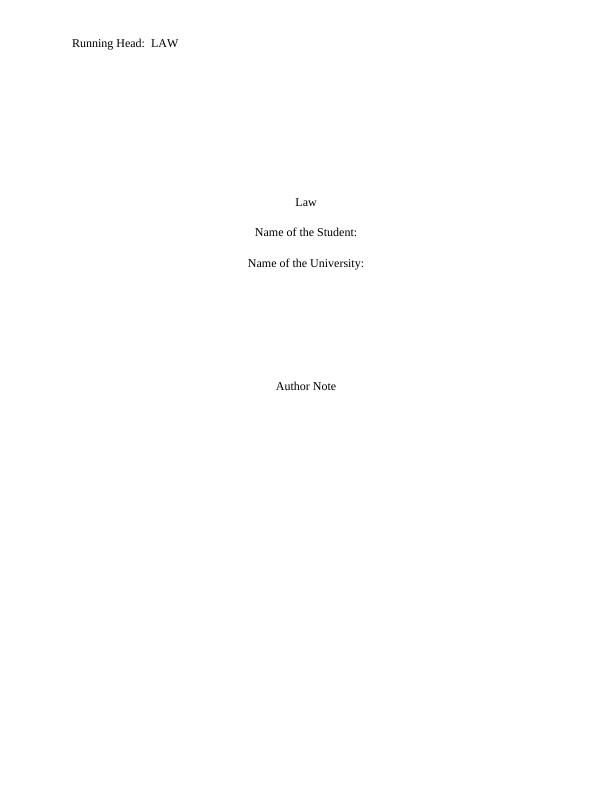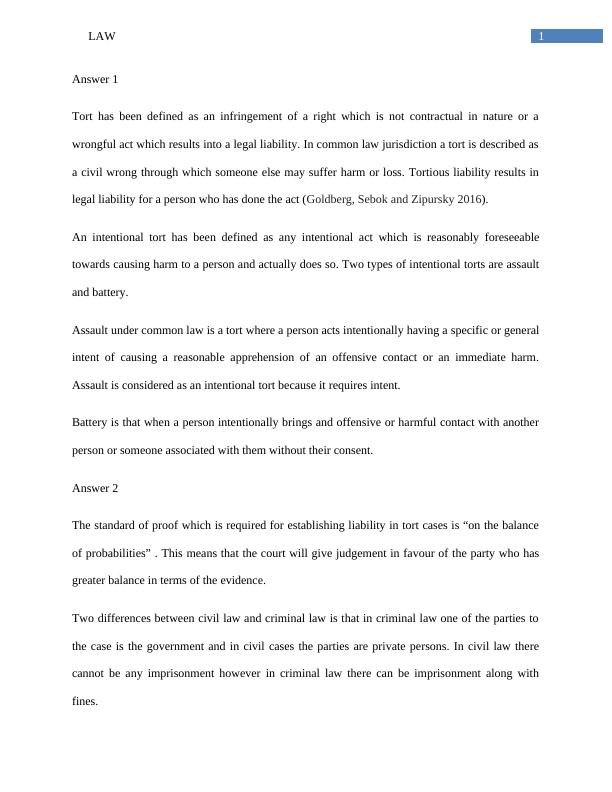Tort Law: Definition, Elements, Defenses, Damages, and Reform
Answering questions related to tort law, including definitions, differences between intentional and strict liability torts, standard of proof, elements of negligence, defenses, damages awarded, and steps to take in case of harm or negligence.
7 Pages1292 Words484 Views
Added on 2023-06-14
About This Document
This article discusses the definition, elements, defenses, damages, and reform of tort law. It covers intentional torts, negligence, product liability, defamation, and property law. It also presents arguments for and against tort reform.
Tort Law: Definition, Elements, Defenses, Damages, and Reform
Answering questions related to tort law, including definitions, differences between intentional and strict liability torts, standard of proof, elements of negligence, defenses, damages awarded, and steps to take in case of harm or negligence.
Added on 2023-06-14
ShareRelated Documents
End of preview
Want to access all the pages? Upload your documents or become a member.
Tort and Duty of Care in Business Law
|7
|1916
|94
Assignment on Tort Law in Australia
|10
|2604
|41
Tort Law and Duty of Care: A Case Study on Extortionate PLC
|7
|1867
|89
Tort and Duty of Care in Business Law
|7
|1545
|71
Tort Law and Duty of Care: Liability of Extortionate Plc for Injury of Samantha
|7
|1830
|39
Tort Law and Duty of Care: Explained and Analyzed
|7
|1523
|55



